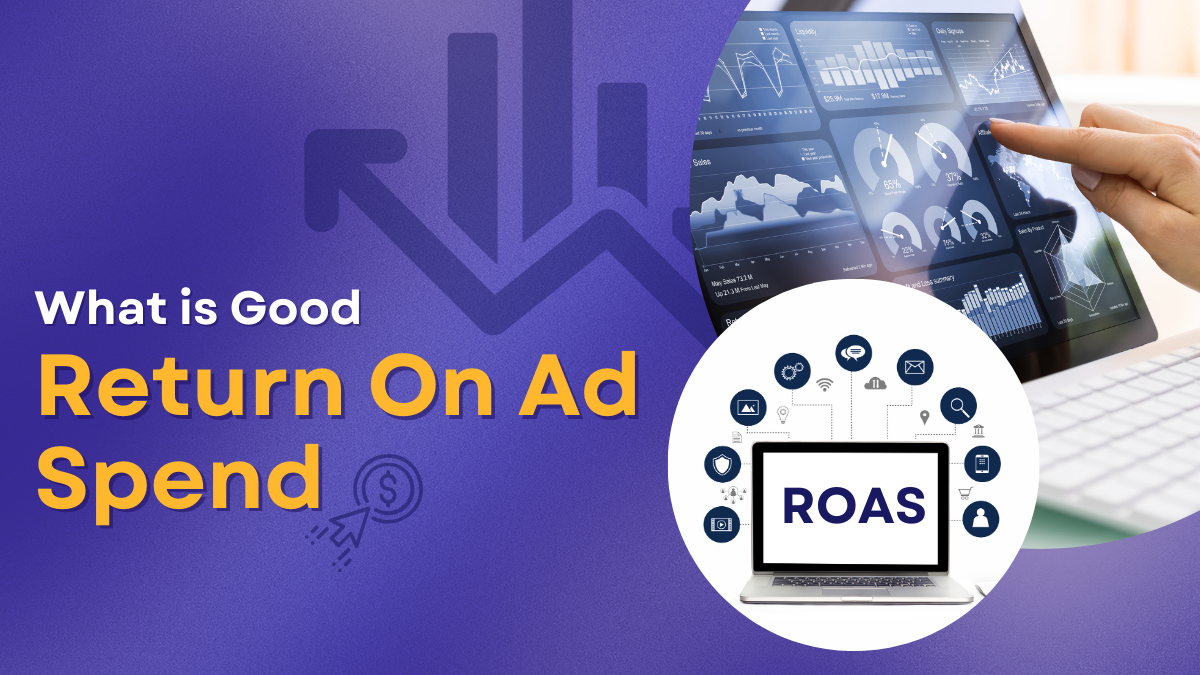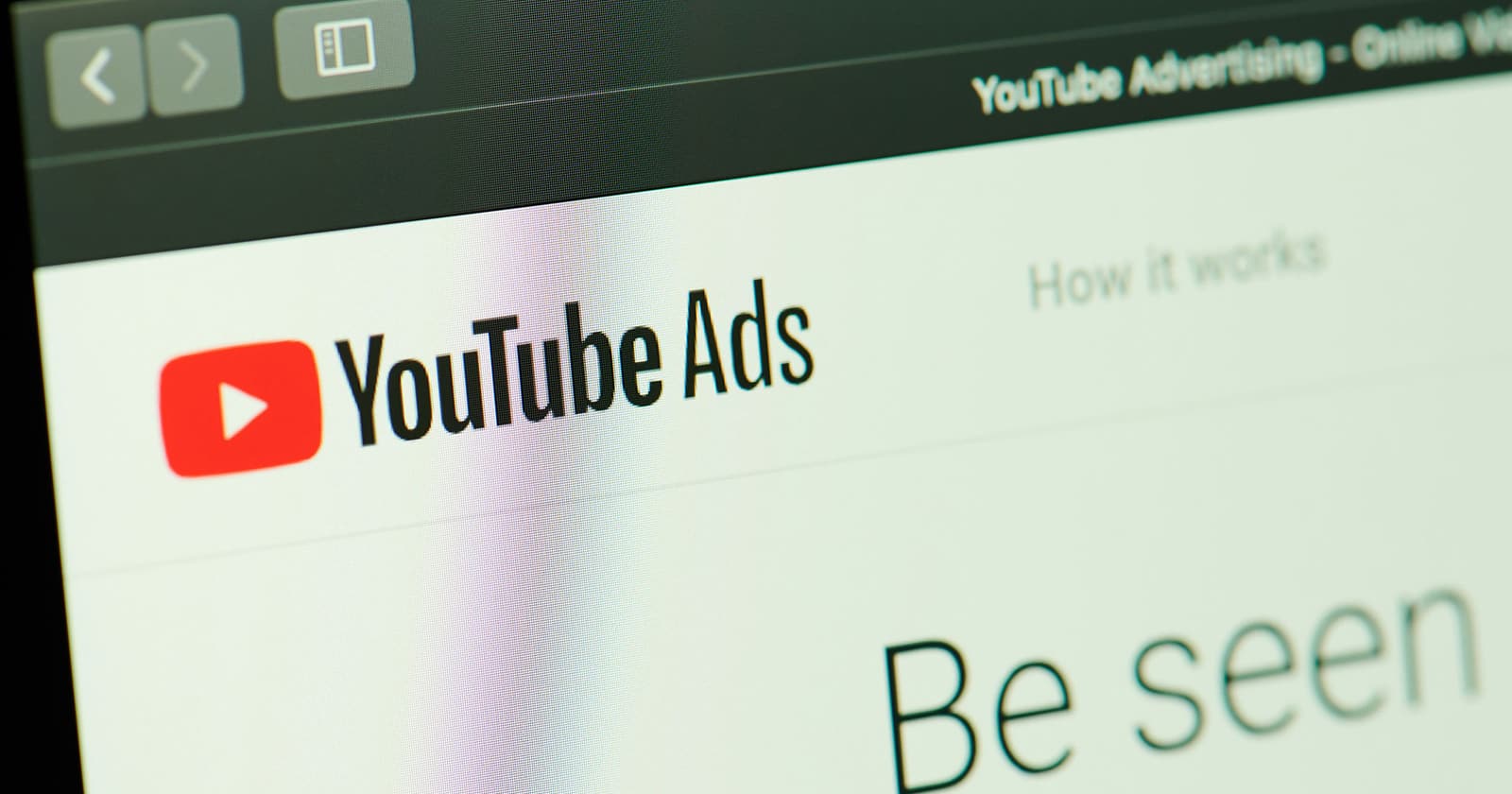Advertising on different platforms can help more people learn about your business and become potential customers. But how much will it cost? And is it worth the cost? If you don’t know if your ads are working, you might waste money and not reach your business goals.
But it doesn’t need to be like this. Every good ad online needs to be checked and looked at to make sure it’s doing well. One important marketing metric to focus on is your Return On Ad Spend (ROAS). In this post, we will look at what is a good ROAS, its advantages, and how to increase it from your ad campaigns.
What Does ROAS Mean?
Return On Ad Spend (ROAS) is a metric that tells you how much money you make for every dollar you spend on ads like pay-per-click (PPC). The higher the ROAS, the better the results.
By looking at ROAS, companies can figure out how well their ads are working on search and social media. They can also see which channels are making the most money, and then spend their money on ads more wisely.
PPC experts leverage advanced strategies and data analysis to improve ROAS, maximizing your ad spend efficiency and profitability.
How Do You Figure Out ROAS?
ROAS is a way to see if your ads are making money. You divide the money you make from ads by the money you spend on the ads. Here’s the formula for ROAS:
ROAS = Ad Revenue / Ad Cost
If you spent $100 on ads and made $300 in revenue, your ROAS is 3:1, or a 300% return. If you put in $1, you will get $3 back.
What is a Good Return On Ad Spend (ROAS)?
The benchmark you compare against depends on your industry. In online retail, it’s good to aim for a 3x (300% return on ad spend). Online shoppers should also think about how much it costs to make the products they are buying in order to know if the business is really making a profit.
For example, let us assume you have a shop that sells T-shirts online. You paid $100 for ads and made $300 from sales. This means you make 3 times more money than you spend on advertising.
However, in order to find out how much money was really made from this advertising campaign, you need to include the cost of making the T-shirts. Let’s say it costs $10 to make each T-shirt. If you sold 6 T-shirts for $10 each, then the cost of goods sold would be $60.
Subtract the cost of goods sold from the total revenue, you get $300 minus $60 equals $240. This means that when you subtract the cost of the goods from the money made by your ad campaign, you get the real profit. Just using the ROAS calculation can be tricky because it doesn’t include the cost of making and selling products.
B2B ROAS
What if you sell to other businesses, like SaaS companies? B2B ROAS is about measuring how much money a business makes from ads aimed at other businesses. In B2B marketing, ROAS metrics are important for figuring out if advertising campaigns are making enough money and helping the business meet its goals.
B2B ROAS keeps track of the money earned from leads or sales that came from advertising, and then compares it to how much money was spent on that advertising. By looking at how much money comes in from B2B advertising, marketers can make their ads work better, spend their money smarter, and get more out of their B2B marketing efforts.
Also Read: The Art of PPC Competitor Analysis (+ Ten Useful Tools)
Difference Between ROAS and ROI
Return on investment (ROI) and ROAS show how well your marketing is working by figuring out how much money you make from it. Even though they might seem alike, there are important things that make them different.
ROI is a way to see how much money an investment makes. It considers all the money spent and earned from a specific project, not just the money spent on advertising. It means measuring how much money comes in compared to how much money goes out.
It looks at things like how much it costs to make products, how much it costs to run the business, and other money put into the business.
On the other hand, ROAS is all about measuring how much money you make from money you spend on advertising. It calculates how much money advertising makes compared to how much is spent on it. ROAS tells you how well your ads are bringing in money.
How ROAS and ROI Work in the Real World?
ROI looks at the big picture of all investments, while ROAS focuses on the results of advertising. Let’s use an example to make this easier to understand.
Picture spending $1,000 on a marketing campaign that includes ads, creating content, and other ways to promote something. Because of this campaign, you make $5,000. To find the return on investment, you subtract all the costs of the campaign from the money made, and then divide that by the total costs.
For instance, if you spent $2,000 and earned $5,000, your return on investment would be 150%. Now, let’s concentrate on ROAS. If you spent $500 on ads and made $2,500 from them, your return on ad spend would be 500%.
ROI tells you how successful your investment is overall, while ROAS shows you how well your advertising is doing. Both measurements are important and serve different purposes when assessing your marketing plans.
By looking at ROI, you can see how much your investments are helping your business make money. To lower your advertising expenses, you can either spend less on ads or use keywords that are cheaper to click on.
Advantages of Keeping Track of Return On Ad Spend
We talked about how ROAS can show if your advertising is working well. Now, we will see why is it good to track ROAS?
Find the Best-Performing Channels
In the big world of advertising options, it can be hard to figure out where to spend your money. Tracking ROAS helps to find the best advertising channels.
By looking at the ROAS for each channel, you can figure out which ones make the most money from your ads. This information helps you know where to put your time and money to get the best results in your advertising.
Optimize Ad Spends
One big benefit of tracking ROAS is being able to make your ad spending more effective. By watching how much money you make from your ads compared to how much you spend on them, you can use this information to make smart choices that will help you get the most out of your investment.
If some ads or marketing methods are not making enough money, you can move your money to other ads or make changes to improve their results. This makes sure you spend your advertising money well.
Improve Marketing Campaign Performance
ROAS finds ways to make your campaigns better by looking at patterns and trends. With this information, you can improve your targeting, advertising, images, or website to make your campaign work better. By making your campaigns better with information about return on ad spend, you can make more money and reach your marketing targets.
Align Your Objectives With Strategies
Smart marketers make sure their marketing plans match their overall business objectives. Tracking ROAS lets you see how much money your ads are making for your business. This helps make sure your marketing efforts are helping your business grow and make more money.
ROAS helps you see how well your ads are working, so you can show that your marketing money is being used wisely and prove the worth of your ads to stakeholders. It also helps to enhance your strategy for future requirements of your business.
Use Data to Make Decisions
No longer should we rely on guessing and gut feelings to make advertising choices. ROAS helps you make smart choices using real information. Whether you need to change your budget, improve who you target, or try new ways to advertise, ROAS can help you make good decisions.
By using ROAS data, you can make smart decisions that are more likely to give good results and make your marketing campaigns successful. However, just tracking ROAS without a reason is not sufficient. It is very essential that tracking and attribution are very accurate and precise.
Factors Affecting ROAS
We see businesses doing things that make their ad campaigns lose money. Sometimes we see companies paying to show their own brand name in ads and this affects the results. A better way to measure ROAS is by looking at non-branded traffic.
Advertisers need to think about the expenses of running their advertising campaigns, not just the cost of the ads themselves. Here are 6 more mistakes you should avoid.
Ignoring Audience Research
Not doing enough research on who will see the ads makes it harder to create ads that make people want to buy the product. Knowing who you are trying to reach is really important for making ads that work well.
Without knowing who your audience is, what they like, and what affects them, your ads might not work and won’t connect with them. Spend time learning about your audience so that your ads can reach the right people and make more money.
Vague KPIs and Goals
Not having clear goals and Key Performance Indicators (KPIs) makes it hard to track and improve the return on advertising spending. This is another challenge. Some businesses waste money on ad campaigns because they don’t have clear goals or ways to measure success.
Decide what you want to achieve, like making more sales, getting more potential customers, or making more people know about your brand, and set specific goals that match those aims. This clear information will help you plan your ads and track their effectiveness accurately.
Insufficient Monitoring and Analyzing of Ads
Not paying attention to setting up good ways to keep track or not studying data well is another problem for businesses. Make sure you have strong ad tracking and analytics tools to measure important metrics like how many people click on your ads, how many of those people actually buy something, and how much money you make from those purchases.
Next, make a plan to often check and study this information to find areas for making improvements based on the data. Optimize your strategy according to the new found data to get more out of your ad spends.
Not Testing and Optimizing Your Ads
One common mistake that reduces ROAS is not testing and improving ads. Businesses that only use one ad and don’t try different ones are making less money than they could.
By testing different ads and making them better based on how they work, you can figure out what your audience likes and get more people to buy your product. Keep checking and improving your ads to make them work better and increase your return on ad spend.
Ineffective Landing Pages
If users are clicking on your ads but don’t have a good experience on your website, it can really decrease how much money you make from your ads. Your website pages should be easy for users to use, look nice, and match the ads you use.
An easy switch from an ad to a landing page and convincing and helpful content can increase sales and make the return on ad spend better. Work with people who are really good at making websites better, at getting people to buy stuff, and at designing landing pages.
Not Paying Attention to Data Insights
Data contains valuable knowledge that can improve your advertising strategies. But only if you know how to find and understand those patterns. The truth is that most people either ignore or don’t understand their data.
Even if you look at your ad performance often, it’s not easy to figure out trends and patterns. Get help from professionals and use tools to get information that can help you make smart choices about changes to your ad campaigns.
Negative keywords help to not waste money on clicks that won’t lead to sales. For example, if you only sell shirts for men, then you might want to use negative keywords like “kids shirts” and “women’s shirts” to make sure your ads don’t show up when people search for those kinds of shoes.
Also Read: What is Click Through Rate – Importance & Steps to Improve It
How to Make Your Ad Campaigns Have Better ROAS?
Your ad campaign didn’t make as much money as you thought it would. What do you need to do? One way to do it is by creating very specific campaigns. Using the same old, unoriginal advertising won’t help your business grow quickly.
Yes, you will get a lot of people clicking, but you won’t make as much money. To get the most out of your advertising investment, you need to make very specific ad campaigns.
Also, do not advertise in areas where they are not performing well.
For instance, your ads might do well in Europe and North America but not as well in South America and Asia. Here are some other ways you can increase your ROAS:
Try Manual Bidding
It gives you more control over your ads and can make them more visible while spending less money. Concentrate on one ad at a time, change the amount you’re willing to pay for the keywords that work best, and keep a close eye on how it’s going. Wait for a few weeks to see if your ad does better.
With manual bidding, advertisers can change the amount they are willing to pay for ads while the campaign is running, to make it work better, use their money wisely, and get the most return on their ad spend. Manual bidding needs more careful attention and checking, but it can be good for advertisers who want more control and options in how they bid for ads.
Use Remarketing Ads
Remarketing helps you reconnect with people who have visited your website or clicked on your ads before. It reminds them and encourages them to do what you want them to do on your website. By carefully choosing where to put your ads, you can get more people to do what you want and make your PPC ads work better.
These ads are made to get people interested in a product or service again, if they didn’t buy it the first time. By using remarketing ads, advertisers can increase their ROAS by reaching out to people who are more likely to buy. We can make ads that are customized to how people behave or what they like, which can make them more likely to buy something.
Test Responsive Search Ads (RSAs)
RSAs make different headlines and descriptions for your ads to make them more personal. It helps companies find the best ways to connect with the people they want to reach. This can make more people click on the ad, make the ad more relevant, and improve the return on ad spend.
RSAs test different ad versions and change them based on how users interact. This helps advertisers reach their audience better and get more people to buy their products. With RSAs, advertisers can make ads better, get more people to click on them, and make more money by showing ads that relate to potential customers.
Try PMax Campaigns
Increase your profits by using Performance Max (PMax) campaigns on Google Ads. It uses technology to find the best audience for your ads on different websites. PMax helps save time and get the most sales with this great tool.
PMax campaigns focus on getting the most out of ad spending by aiming for more valuable purchases or leads with higher lifetime value. This bidding strategy works well for advertisers who want to make the most money. It moves the budget to the campaigns that make the most profit.
To Conclude
ROAS is a very important way to measure how well advertising campaigns work and how cost-effective they are. Making your ads better needs you to keep a careful eye on them, study how they’re doing, and make changes to get a good return on your investment.
In digital marketing, businesses need to use ROAS to make more money and do better marketing. This will help them grow and compete with other businesses. By using ROAS analysis in their planning, businesses can make better advertising choices, use their budget better and reach their marketing goals more effectively.
FAQs
Can we use ROAS to check if all types of ads are working well?
ROAS is a way to see how well digital ads are working. It helps track how much money is made from advertising compared to how much is spent. It is often used for pay-per-click, display, and social media ads. However, it might not work well for measuring how well traditional ads in newspapers or on TV are doing because they can’t be tracked as easily.
How often should businesses check their ROAS metrics?
How often you check ROAS metrics depends on how often you run ads, how long it takes to make sales, and if you need to make real-time changes. Some businesses track ROAS every day or week to make quick changes, while others check it every month or quarter to see how things are going in the long run.
What does attribution modeling do in ROAS analysis?
Attribution modeling is how we figure out which parts of a customer’s journey get credit for making them buy something. Because customers might see many ads or marketing channels before they buy something, it is important to know which ad or channel really led to the sale. This helps businesses understand which ads are making money and how much money they are making.
How is ROAS different from other ad metrics like CTR or CPC?
ROAS looks at how much money is made from ads compared to how much money is spent on it. It helps us understand if advertising is making a good profit. On the other hand, CTR shows the percentage of people who click on an ad compared to the total number of times the ad is shown, while CPC figures out the average cost for each click on an ad.
Can analyzing ROAS help businesses spend their marketing money better?
Sure, ROAS analysis helps to figure out which advertising channels and campaigns make the most money compared to how much is spent. This can help to make marketing budgets more effective. By moving money to channels that are bringing in more money and improving campaigns that aren’t doing well, businesses can make their marketing efforts more successful.



























